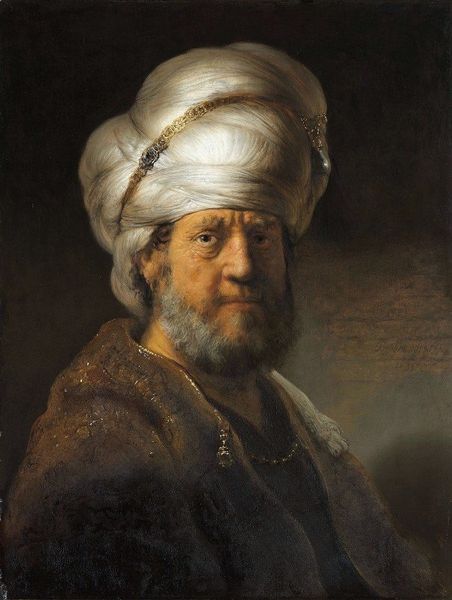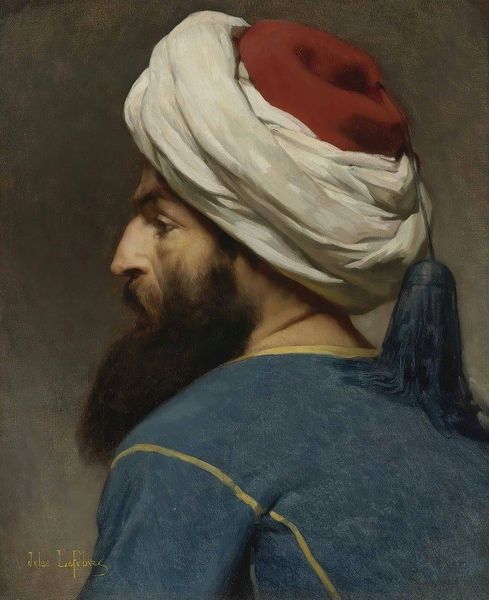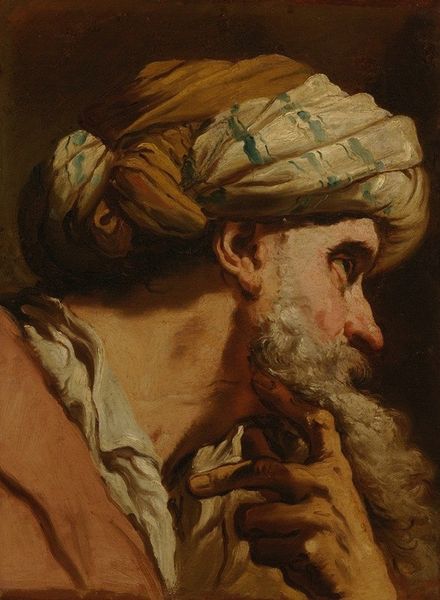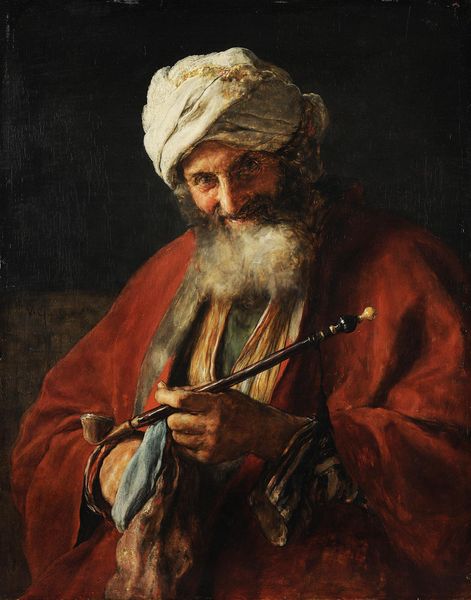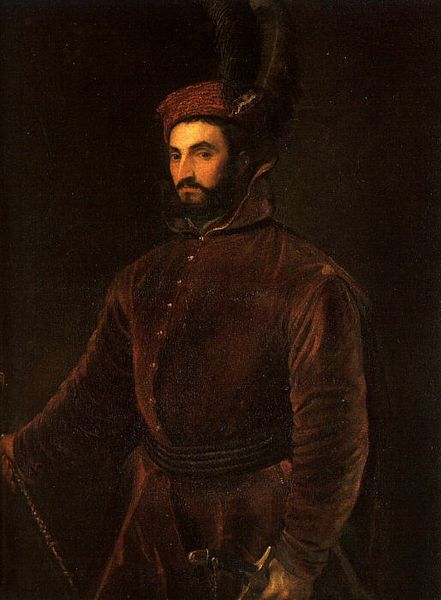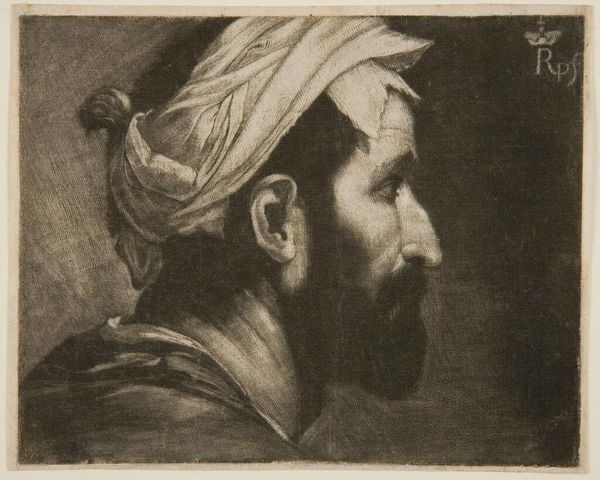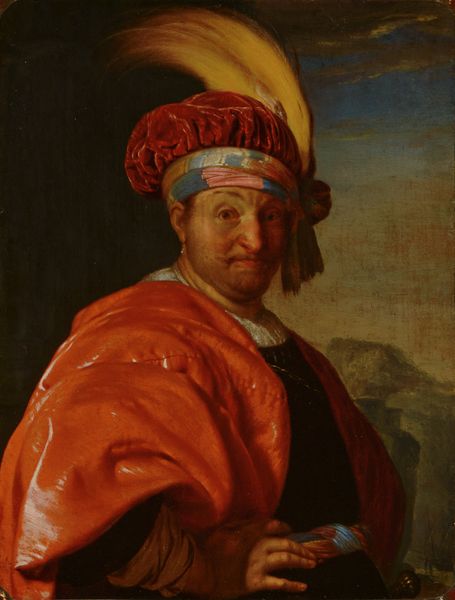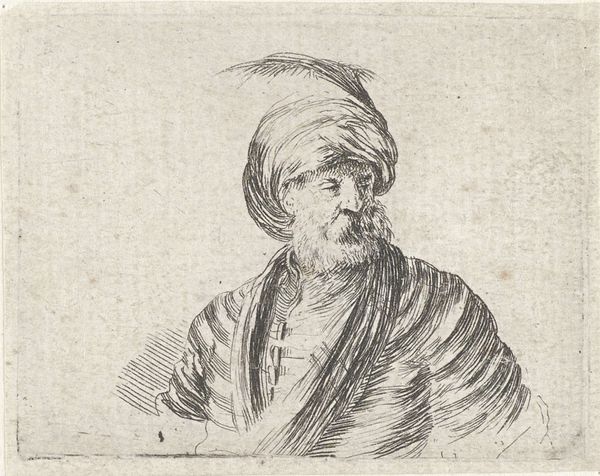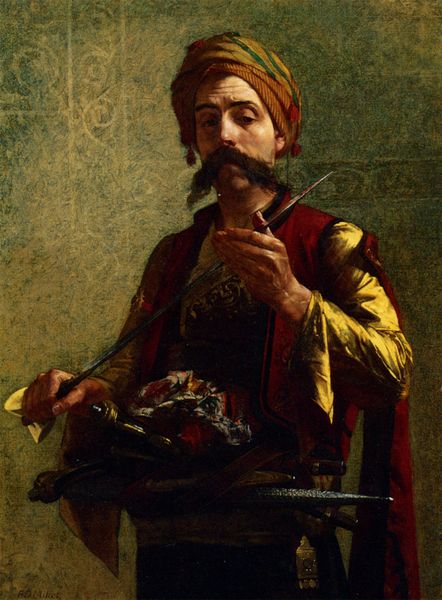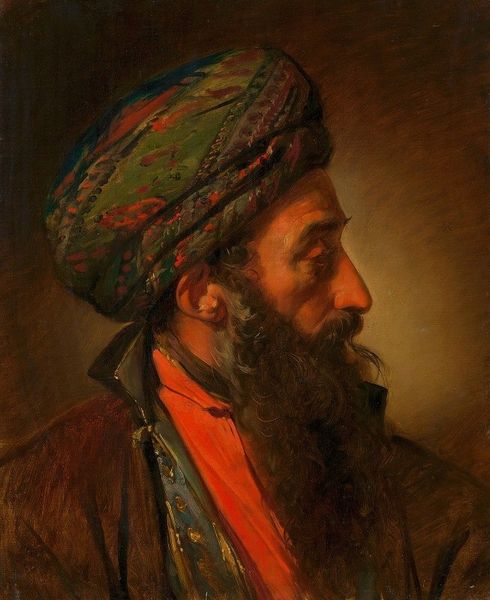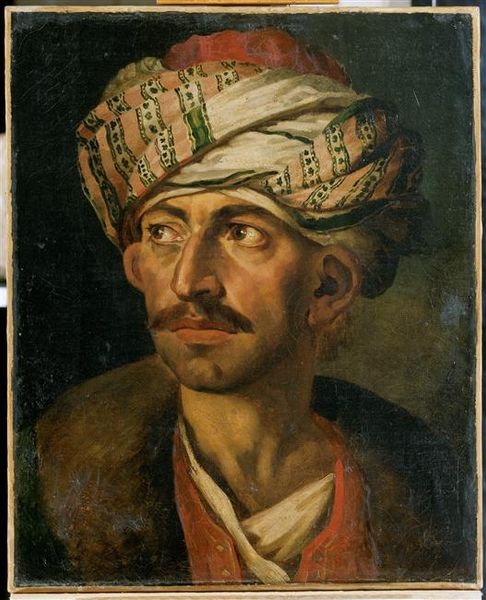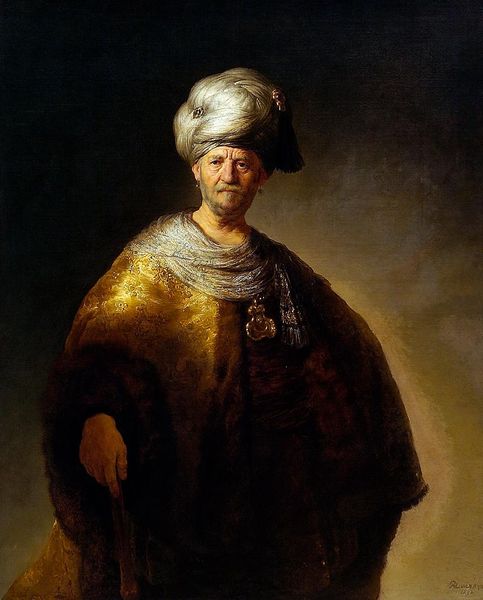
painting, oil-paint
#
portrait
#
portrait
#
painting
#
oil-paint
#
romanticism
#
orientalism
Dimensions: 56.5 x 47 cm
Copyright: Public domain
Curator: Looking at Jean-Francois Portaels' "Head of an Oriental Man" from 1842, one can immediately observe the Romanticist fascination with the "Orient," here rendered in oil paint. What's your take on it as a first impression? Editor: The striking thing is how intense the gaze isn't. It feels almost averted, internal. I wonder what relationship the artist was trying to strike with the model—was he an individual, or more a representation? Curator: That is precisely the tension within Orientalist works, isn't it? Portaels painted this during a time of increased colonial expansion. Paintings like these, which ostensibly seek to portray a foreign 'other', were, in actuality, largely fantasies, built to consolidate Western hegemony. How do you see this painting functioning within that system? Editor: Well, consider how paintings and prints informed public perceptions, shaping what people understood as "truth." This portrait contributes to the exoticized "Orient", a common visual trope throughout Europe. He is an archetype rather than a real individual. I'd argue it reinforced the divide. The sitter is shrouded in a hazy dark light that doesn't feel too inviting, like a mirage or a fleeting thought. Curator: I agree. The romanticised turbans, the robes. They function almost like costume, reinforcing Western perceptions rather than illuminating anything genuinely 'Eastern'. Do you see any resistance, even unintentional, to that dominant narrative? Editor: It’s a reach, perhaps, but his averted gaze almost signals a refusal to fully participate. It suggests interiority, a selfhood inaccessible to the viewer. Even through Portaels’ hand, the subject hints at a world beyond the Western gaze. Curator: Perhaps. Understanding the visual and political frameworks certainly deepens our engagement with pieces like these, reminding us of their complex history. Editor: Indeed. There is so much to unpack when looking at artworks whose historical context clashes with our contemporary values, particularly if we use an intersectional, global-minded framework.
Comments
No comments
Be the first to comment and join the conversation on the ultimate creative platform.
